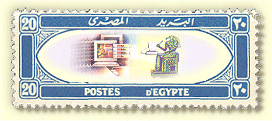

| Report of the February 16 2019 Meeting Revenues and Fiscals | |
|
The Chairman welcomed those present, and especially our overseas visitors, Dr Sherif Samra (ESC 311), Vahe Varjabedian (ESC 390), Mats Edstrom (ESC 691)
and Ronny van Pellecom (ESC 618). A minute’s silence was held in memory of our late member Dr Mostafa El-Dars (ESC 556). Fifteen members attended; there were apologies for absence from ten members. The Vice-Chairman reminded members that application forms for the joint weekend meeting with the Sudan Study Group (April 26-30 at the Morley Hayes Hotel, Derby) were due in by the end of the month and ran through the exciting list of meetings planned for the rest of the year (see previous page). Dr Samra was asked to elaborate on a request by the Philatelic Society of Egypt for financial help in connection with the 90th Anniversary exhibition in Cairo in September and after some discussion it was agreed unanimously (proposed Richard Wheatley, seconded Brian Sedgley) that the Circle would donate £5,000 to our Cairo colleagues. We all look forward to the September visit. The meeting decided to take no action for 12 months on an appeal by the Royal Philatelic Society of London for financial help for its new headquarters, and that no action should be taken on an “in principle” request from a member for help with publishing his book on Egyptian philately. The Circle is eager to help member-authors, but will judge requests only when, as with the Rossiter Trust, the work is virtually complete. After 15 years as Treasurer, Brian Sedgley (ESC 268) handed over to Sami Sadek (ESC 559), though he will continue to accept 2019 subscriptions from members for the immediate future. The meeting congratulated Dr Sadek on his new post and thanked Mr Sedgley by acclaim for his excellent and efficient work. There was some discussion on the Secretary’s suggestion that Alain Stragier (Belgium) be restored to membership after an absence of 19 years, and it was unanimously agreed (proposed Mike Murphy, seconded John Clarke) that such an offer be made, to recognise his recent work in the Delta railways series of articles and offers to help with QC feedback. The Secretary announced that the forthcoming Egypt Study Circle Auction No 58 (announcement and future link can be found here) (postal only, members only) will be held in springtime (closing date April 15), containing further gems from the Peter Andrews collection and over 500 lots of members’ material including a good many books. . It is some years since we had a meeting on Revenues and Fiscals, and the display on Saturday, led by a new member in David Jones (ESC 716), was a real eye-opener, with comprehensive and massive material beautifully and clearly displayed, with full explanations throughout. The classic work on Egyptian revenues is the late Peter Feltus’ catalogue of 1982, and here was a full-colour and classically-displayed version, with virtually every stamp on show. Quite remarkable. Royal gems from David Jones’s collection: above, imperf pairs of the Agricultural Syndicate, only one sheet of each recorded;
below, part of the misperforate set of the First Egyptian Tax Issue, 1939-1949
The 50 mills of the 1938 Finance Ministry issue, first tax stamp overprinted for use in Gaza. Fewer than ten recorded mint
|
|
|